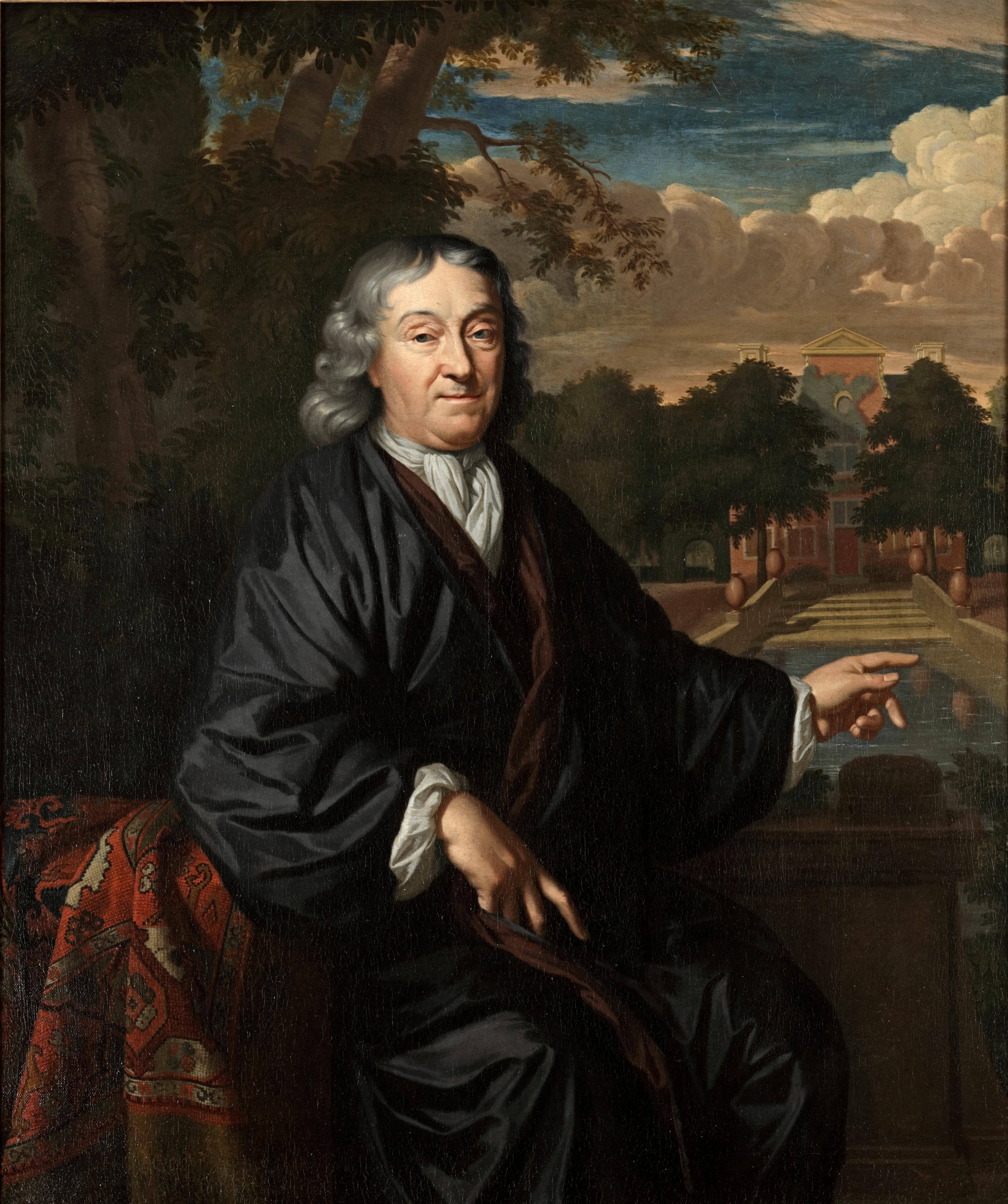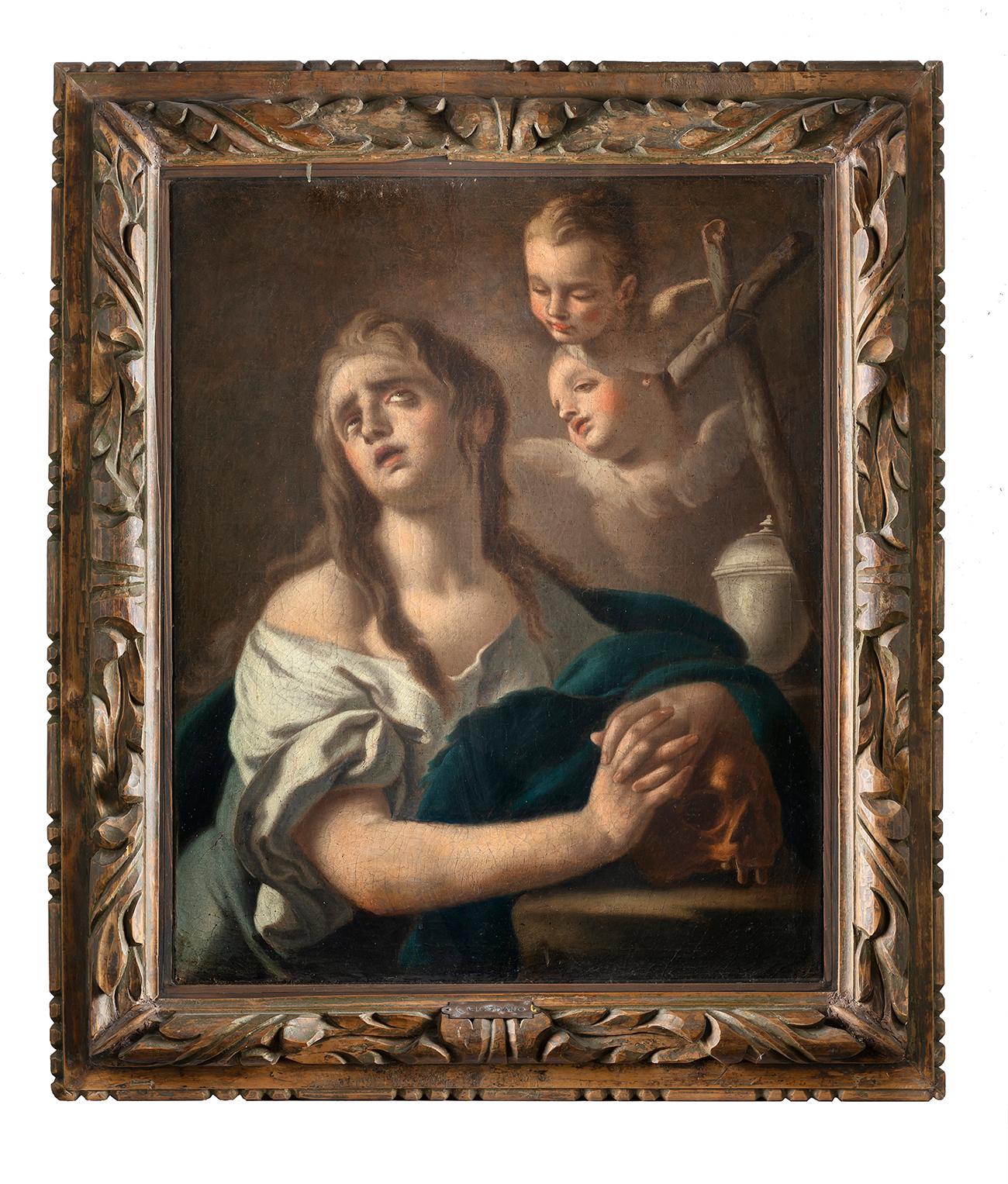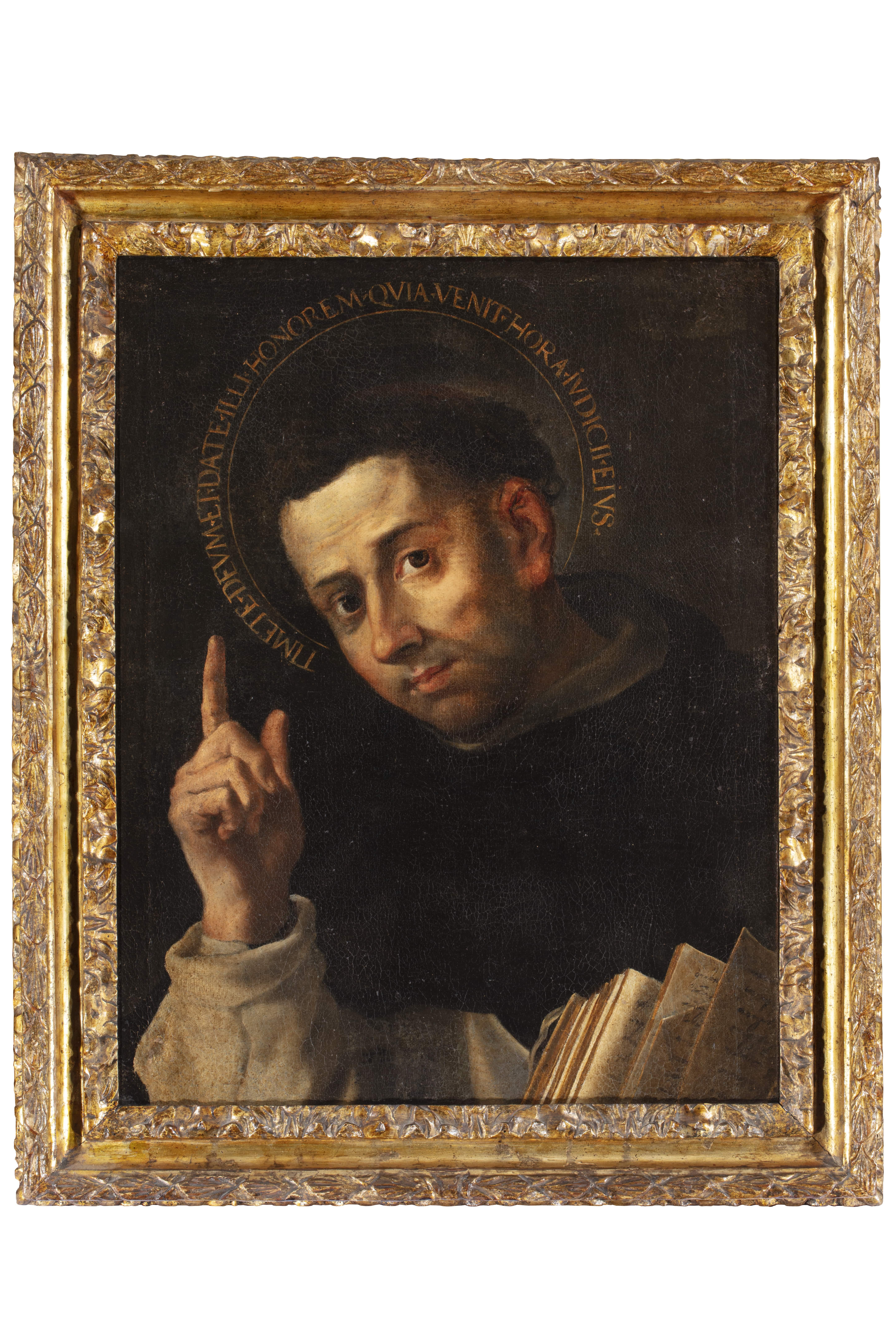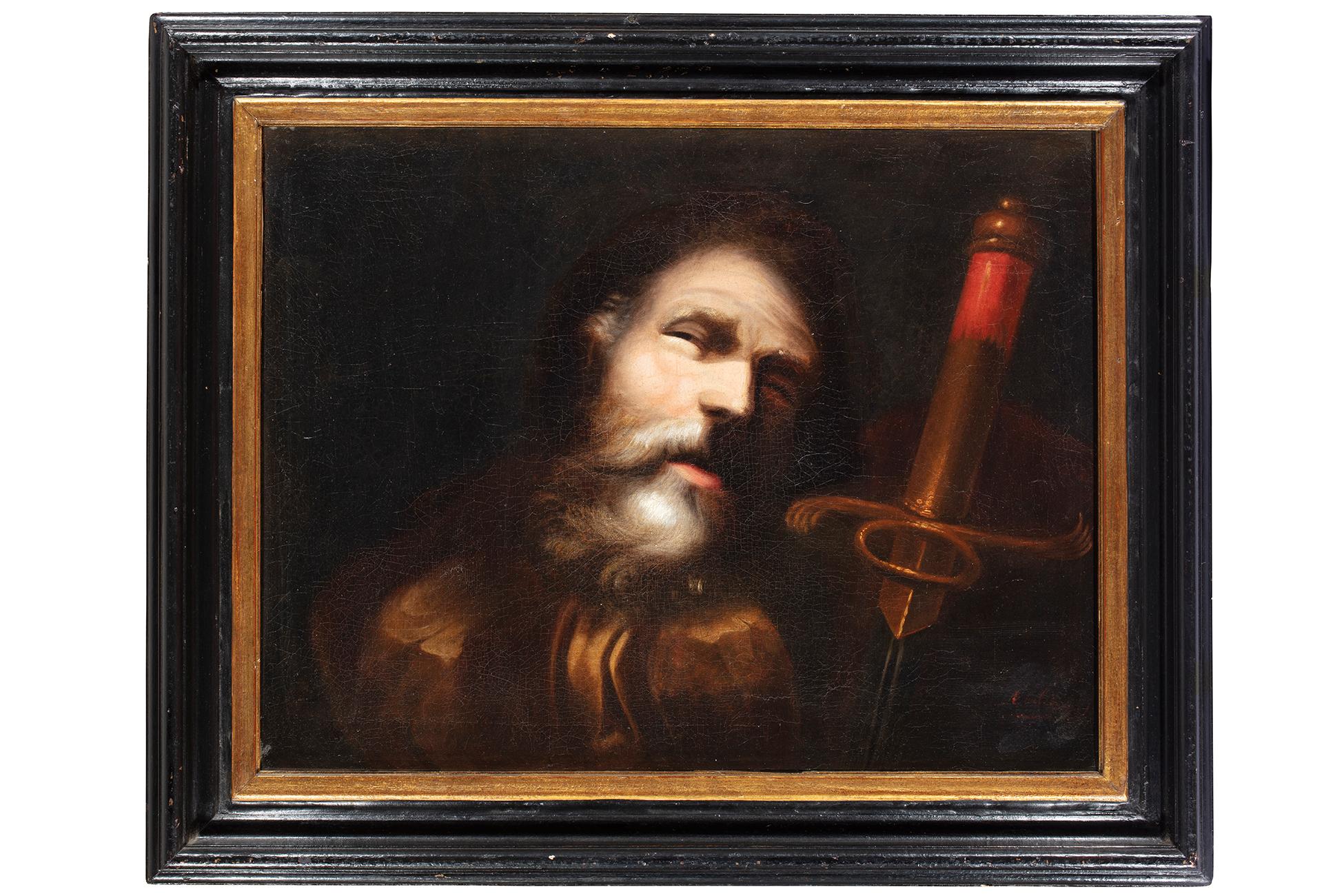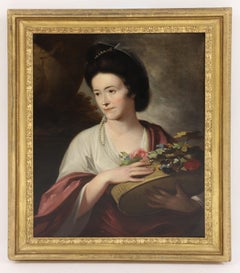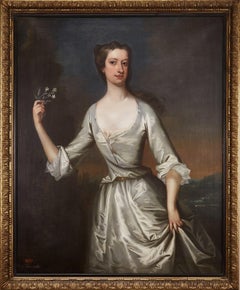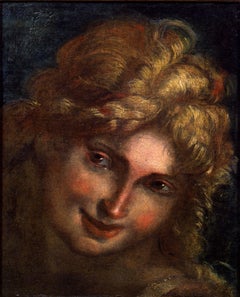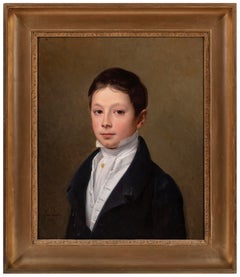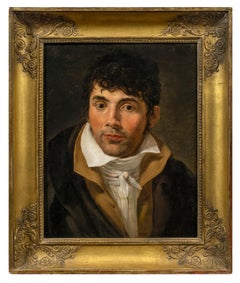18th Century Portrait Painting of a Young Girl Wearing a Pink Bonnet
View Similar Items
Want more images or videos?
Request additional images or videos from the seller
1 of 6
Sir William Beechey18th Century Portrait Painting of a Young Girl Wearing a Pink Bonnetc.1780
c.1780
About the Item
- Creator:Sir William Beechey (1753 - 1839, British)
- Creation Year:c.1780
- Dimensions:Height: 11.42 in (29 cm)Width: 9.65 in (24.5 cm)
- Medium:
- Movement & Style:
- Period:1780-1789
- Condition:
- Gallery Location:Bath, GB
- Reference Number:1stDibs: LU9526754522
About the Seller
5.0
Vetted Seller
These experienced sellers undergo a comprehensive evaluation by our team of in-house experts.
Established in 2002
1stDibs seller since 2015
36 sales on 1stDibs
Typical response time: 1 hour
Associations
The British Antique Dealers' AssociationLAPADA - The Association of Arts & Antiques DealersInternational Confederation of Art and Antique Dealers' Associations
More From This SellerView All
- 18th century English portrait of a lady beside an urn, with a basket of flowersBy Tilly KettleLocated in Bath, SomersetPortrait of a lady wearing a white gown with a red cloak, pearls in her hair and draped over one shoullder, standing beside a classical urn with a basket of flowers, c.1765. The portrait is believed to be a companion portrait of a John (1741-1816) or James (1751-1807) Durno which is housed in an identical frame. The sitter is possibly either the wife of John who was Janes Byres of Stonywood or John and James's sister Elizabeth. (James never married). The Durno family were based around the Aberdeen area of Scotland and John was an advocate in the area and then later a customs official in Jamaica. James was a successful timber merchant, spending time in the Baltic before being made His Majesty's Consul in Memel, Prussia. The portrait is likely to have been painted before Tilly travelled to India in 1768, when John, Jane and Elizabeth would have been in their twenties. We are gtrateful to Mark Beattie for sharing his family knowlege and research on the portrait. Provenance: With W. C. Beattie in the mid 19th century, and by descent through the family Private collection, Kent With thanks to Hugh Belsey who has confirmed this to be the work of Tilly Kettle from photographs. Tilly Kettle (1735-1786) was born in London, the third of six children by Henry Kettle (c.1704-c.1773), a coach painter, and his wife Ann. He attended William Shipley...Category
18th Century Old Masters Portrait Paintings
MaterialsCanvas, Oil
- English 18th century portrait of Henrietta Pelham-Holles, Duchess of Newcastle.By Charles JervasLocated in Bath, SomersetPortrait of Henrietta Pelham-Holles (née Godolphin) (1701-1776), Duchess of Newcastle, standing in a wooded landscape with a river beyond, three-quarter length wearing an ivory silk ...Category
1720s Old Masters Portrait Paintings
MaterialsOil, Canvas
- 17th century portrait of a ladyBy Nicolaes MaesLocated in Bath, SomersetPortrait of a lady by Dutch Golden Age painter Nicolaes Maes (1634-1693). Half-length, within a feigned oval, the lady wears a pearl necklace and earrings, an ivory silk gown adorned...Category
17th Century Old Masters Portrait Paintings
MaterialsCanvas, Oil
- Attributed to John Riley, 17th century English portrait of a girl on a terraceBy John RileyLocated in Bath, SomersetPortrait of a young girl, full-length, wearing a blue silk gown, standing on a terrace beside a classical urn holding a branch with blossom. Attributed to John Riley...Category
17th Century Old Masters Portrait Paintings
MaterialsOil, Canvas
$25,597 Sale Price25% Off - 17th century portrait of a lady seated in an interiorLocated in Bath, SomersetPortrait of a lady, believed to be Henrietta Hyde (née Boyle), Countess of Rochester, (1646-1687) three quarter length, wearing an amber coloured silk gown, with an embroidered blue mantle, seated in an interior. Oil on canvas in a ‘Lely’ frame with the Hornby Castle inventory number 60 attached on the reverse. Provenance: By descent through the Dukes of Leeds, Hornby Castle, Yorkshire; Christie's, London - The Property of the 10th Duke of Leeds Will Trust, 30th October, 2014, Lot 106. Private collection Guernsey. Hornby Castle, Catalogue of Pictures, London, 1898, p. 5, no.60. Historical and descriptive catalogue of pictures belonging to His Grace The Duke of Leeds, London, 1902, p. 24, no. 60. Henrietta was born in Wiltshire, to Sir Richard Boyle, 2nd Earl of Cork and Elizabeth Boyle, Countess of Cork. In 1665, she married Laurence Hyde, 1st Earl of Rochester, son of Edward Hyde, 1st Earl of Clarendon and Frances Aylesbury. They had four children. As sister-in-law of Anne Hyde, the Duchess of York she was appointed as governess to her daughter, Princess Anne (the future Queen) between 1677 and 1682. Like most of the Boyle dynasty, who in the space of two generations had become almost all-powerful in the south of Ireland, Henrietta was strong-minded and acquisitive, and could be ruthless in asserting her rights. During the last two years of her life, when her husband was Chief Minister to his brother-in-law King James II...Category
17th Century Old Masters Portrait Paintings
MaterialsCanvas, Oil
- English 17th century portrait of James Thynne as a young boy by a fountainBy Johann KerseboomLocated in Bath, SomersetPortrait of the Hon. James Thynne (c. 1680-1704), full-length, in the gardens of Longleat House, seated beside a fountain, holding a shell beneath water spouting from a horn blown by a cherub on a dolphin. A glimpse of part of Longleat House can be seen upper left. Oil on canvas in a period giltwood frame, decorated with leaves and acorns. C. 1682. Dimensions: 145 x 123cm (57 x 48in) in frame Provenance: Ex Longleat House, Wiltshire Private collection, Bath James Thynne was the youngest son of Thomas Thynne, 1st Viscount Weymouth and Frances Finch of Longleat House, Wiltshire. He died in his youth and his Aunt, Anne Kingsmill Finch, Countess of Winchilsea (1661-1720), wrote a moving poem on his death. He was buried in the family vault at Longbridge Deverill, Wiltshire. A mezzotint of this painting by William Faithorne the Younger is held in the Royal Collection. Johann Kerseboom (d.1708) was the nephew of Frederick Kerseboom and first worked in Germany before coming to England in the 1680's where his sitters included the 'Electress Sophia Dorothea' (known from a mezzotint by William Faithorne). His early works were influenced by William Wissing...Category
17th Century Old Masters Portrait Paintings
MaterialsOil, Canvas
$24,574 Sale Price20% Off
You May Also Like
- Head of an AngelLocated in New York, NYProcaccini was born in Bologna, but his family moved to Milan when the artist was eleven years old. His artistic education was evidently familial— from his father Ercole and his elder brothers Camillo and Carlo Antonio, all painters—but his career began as a sculptor, and at an early age: his first known commission, a sculpted saint for the Duomo of Milan, came when he was only seventeen years old. Procaccini’s earliest documented painting, the Pietà for the Church of Santa Maria presso San Celso in Milan, was completed by 1604. By this time the artist had made the trip to Parma recorded by his biographers, where he studied Correggio, Mazzola Bedoli, and especially Parmigianino; reflections of their work are apparent throughout Procaccini's career. As Dr. Hugh Brigstocke has recently indicated, the present oil sketch is preparatory for the figure of the angel seen between the heads of the Virgin and St. Charles Borrommeo in Procaccini's altarpiece in the Church of Santa Afra in Brescia (ill. in Il Seicento Lombardo; Catalogo dei dipinti e delle sculture, exh. cat. Milan 1973, no. 98, pl. 113). As such it is the only known oil sketch of Procaccini's that can be directly connected with an extant altarpiece. The finished canvas, The Virgin and Child with Saints Charles Borrommeo and Latino with Angels, remains in the church for which it was painted; it is one of the most significant works of Procaccini's maturity and is generally dated after the artist's trip to Genoa in 1618. The Head of an Angel is an immediate study, no doubt taken from life, but one stylistically suffused with strong echoes of Correggio and Leonardo. Luigi Lanzi, writing of the completed altarpiece in 1796, specifically commented on Procaccini's indebtedness to Correggio (as well as the expressions of the angels) here: “Di Giulio Cesare...Category
17th Century Old Masters Figurative Paintings
MaterialsPaper, Canvas, Oil
- Portrait of a Young BoyLocated in New York, NYSigned and dated, lower left: Louise Hersent/ 1823 Provenance: Private Collection, Chicago, by 1996 Private Collection, Florida This charming portrait of a young boy is the work of Louise-Marie-Jeanne Hersent, a little-known woman artist of the French Restoration often identified by her maiden name, Mauduit. While Hersent—as we will call her here following the signature on the painting—has been understudied, the known details of her life and career reveal that she held a privileged position in artistic life in the early nineteenth century in Paris. She exhibited at the Salon from 1810 until 1824, and in 1821 she married the painter Louis Hersent, a successful pupil of Jacques-Louis David who was patronized by Louis XVIII and Charles X. It is likely through her husband’s royal patronage that Hersent’s Louis XIV Visits Peter the Great was purchased for the Royal Collection in Versailles. In 1806, while still Louise Mauduit, she painted a portrait of Napoleon’s youngest sister, Pauline Bonaparte...Category
1820s Old Masters Paintings
MaterialsOil, Canvas
- Portrait of a GentlemanLocated in New York, NYCircle of Jacques-Louis David (French, 18th Century) Provenance: Private Collection, Buenos Aires Exhibited: “Art of Collecting,” Flint Institute of Art, Flint, Michigan, 23 November 2018 – 6 January 2019. This vibrant portrait of young man was traditionally considered a work by Jacques-Louis David, whose style it recalls, but to whom it cannot be convincingly attributed. Rather, it would appear to be by a painter in his immediate following—an artist likely working in France in the first decade of the nineteenth century. Several names have been proposed as the portrait’s author: François Gérard, Louis Hersent, Anne-Louis Girodet (Fig. 1), Theodore Gericault, and Jean-Baptiste Wicar, among others. Some have thought the artist Italian, and have proposed Andrea Appiani, Gaspare Landi...Category
18th Century Old Masters Paintings
MaterialsCanvas, Oil
$45,000 - Portrait of a Lady with a ChiqueadorLocated in New York, NYProvenance: Torres Family Collection, Asunción, Paraguay, ca. 1967-2017 While the genre of portraiture flourished in the New World, very few examples of early Spanish colonial portraits have survived to the present day. This remarkable painting is a rare example of female portraiture, depicting a member of the highest echelons of society in Cuzco during the last quarter of the 17th century. Its most distinctive feature is the false beauty mark (called a chiqueador) that the sitter wears on her left temple. Chiqueadores served both a cosmetic and medicinal function. In addition to beautifying their wearers, these silk or velvet pouches often contained medicinal herbs thought to cure headaches. This painting depicts an unidentified lady from the Creole elite in Cuzco. Her formal posture and black costume are both typical of the established conventions of period portraiture and in line with the severe fashion of the Spanish court under the reign of Charles II, which remained current until the 18th century. She is shown in three-quarter profile, her long braids tied with soft pink bows and decorated with quatrefoil flowers, likely made of silver. Her facial features are idealized and rendered with great subtly, particularly in the rosy cheeks. While this portrait lacks the conventional coat of arms or cartouche that identifies the sitter, her high status is made clear by the wealth of jewels and luxury materials present in the painting. She is placed in an interior, set off against the red velvet curtain tied in the middle with a knot on her right, and the table covered with gold-trimmed red velvet cloth at the left. The sitter wears a four-tier pearl necklace with a knot in the center with matching three-tiered pearl bracelets and a cross-shaped earing with three increasingly large pearls. She also has several gold and silver rings on both hands—one holds a pair of silver gloves with red lining and the other is posed on a golden metal box, possibly a jewelry box. The materials of her costume are also of the highest quality, particularly the white lace trim of her wide neckline and circular cuffs. The historical moment in which this painting was produced was particularly rich in commissions of this kind. Following his arrival in Cuzco from Spain in the early 1670’s, bishop Manuel de Mollinedo y Angulo actively promoted the emergence of a distinctive regional school of painting in the city. Additionally, with the increase of wealth and economic prosperity in the New World, portraits quickly became a way for the growing elite class to celebrate their place in society and to preserve their memory. Portraits like this one would have been prominently displayed in a family’s home, perhaps in a dynastic portrait gallery. We are grateful to Professor Luis Eduardo Wuffarden for his assistance cataloguing this painting on the basis of high-resolution images. He has written that “the sober palette of the canvas, the quality of the pigments, the degree of aging, and the craquelure pattern on the painting layer confirm it to be an authentic and representative work of the Cuzco school of painting...Category
17th Century Old Masters Paintings
MaterialsCanvas, Oil
- Male and female portrait, both in silk kimono, possibly textile dealersBy Christoffel LubienieckiLocated in Amsterdam, NLCHRISTOFFEL LUBIENIECKI (1659-1729) Pair of portraits of a gentleman and a lady, both in silk kimono, before a country house (circa 1680) Indistinctly signed “C.......” on a box under the man’s left hand Oil on canvas, 79.5 x 67 cm each Both sitters are portrayed wearing a silk “Japanese” coat. During the second half of the seventeenth the Japanese silk coat, an adapted Japanese kimono, became a real vogue in the Dutch elite. The exclusive Dutch trade contacts with Japan can explain the popularity of the kimono-style silk coats in the Netherlands. Everybody who could afford one, dressed in such a fashionable and comfortable coat and, like the present sitters, some proud owners had themselves portrayed in a “Japanese” coat often together with an oriental carpet to underline their standing and international connections. These portraits are the work of the Polish-born portraitist Christoffel Lubieniecki (also known as Lubienitski, Lubinitski or Lubiniecki) Lubieniecki was first trained in Hamburg under Julian Stuhr and after 1675 in Amsterdam under Adriaen Backer and Gerard de Lairesse. He specialized in landscapes, generally of an Italianate character, and in portraits. The loving execution of these contented burghers, enjoying the garden vistas of their country house, places him alongside Amsterdam portraitists such as Constantijn Netscher and Michiel van Musscher...Category
1680s Old Masters Portrait Paintings
MaterialsCanvas, Oil
- 18th century portrait of the painter Nathaniel DanceLocated in London, GBCollections: Robert Gallon (1845-1925); Private Collection, UK. Oil on canvas laid down on panel Framed dimensions: 11.5 x 10 inches This highly engaging, previously unpublished portrait by Johan...Category
18th Century Old Masters Portrait Paintings
MaterialsOil, Wood Panel, Canvas
Recently Viewed
View AllMore Ways To Browse
Georgian Period Oil Painting
Salisbury Antique
Samuel Johnson
William Ellis
Paula Pink
Oval Girl Portrait
Georgian Gown
Burford Painting
Pink Bonnet
18th C Portraits Women
Portrait Of A Countess
Spencer House
Anthony Charles
Oil Portrait King Queen
Philip Stone
Portrait Kings
Bearded Portrait
Antique Oil Portrait Of A Lady




